The Ministry of Defence has set out in a written answer why it terminated the plan to convert HMS Iron Duke, confirming that the project failed to meet the threshold for continued investment once timelines, cost, and service life were assessed in detail.
Responding to Conservative MP Ben Obese-Jecty, Defence Minister Luke Pollard said the MoD “keeps all capability programmes under regular review to ensure they remain affordable, deliver value for money, and align with operational priorities.”
He added that the decision followed “a comprehensive assessment” of the ship and the proposed work.
The abandoned plan would have taken a Type 2087 towed array sonar system from a decommissioned Type 23 frigate and retrofitted it to Iron Duke. The concept only made sense if the frigate’s remaining years in service justified the investment and the time it would spend unavailable during the conversion. According to Pollard, those calculations no longer worked.
He stated plainly that “given the platform’s remaining Service life, the time required to complete the conversion, and competing operational priorities, the benefits of proceeding did not justify the additional cost or extended period out of service.”
On that basis, he said, “resources were therefore re-prioritised to deliver greater operational effect.”


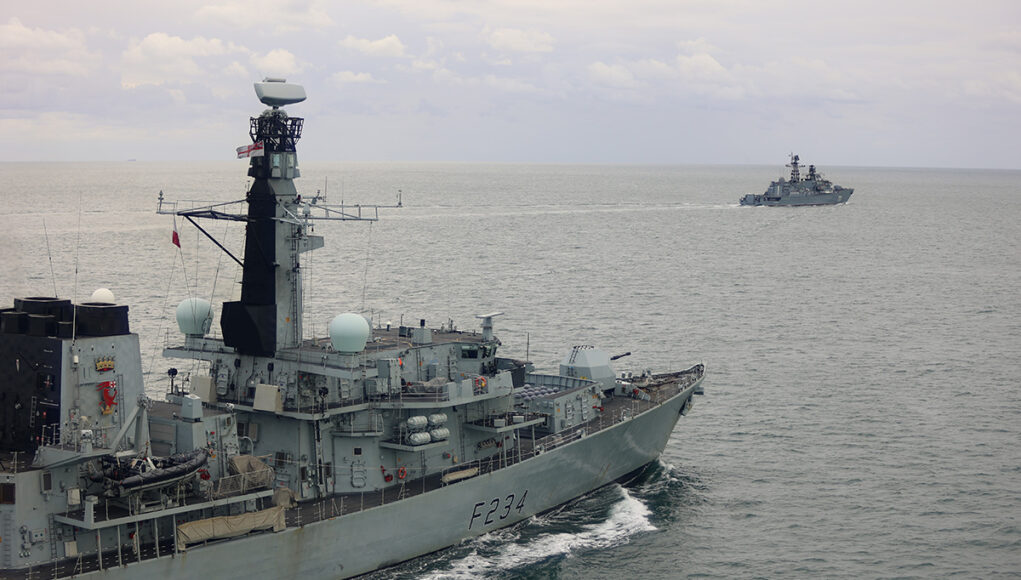

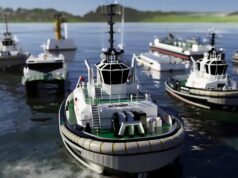


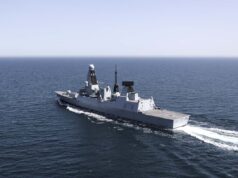

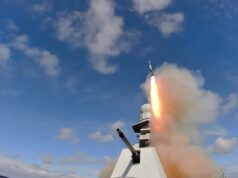
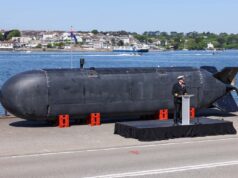
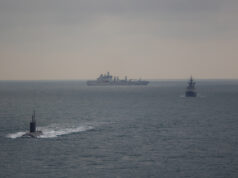
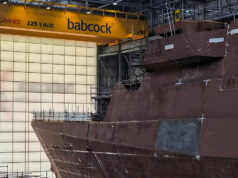

In other words, it’s knackered.
Aren’t we all !!!
Anyway, I’ve enjoyed it here this past few months, lot’s of laughs, see you in the next one.
Thanks. 👋👋
lol. yeah
Are you dying?
A box of old spanners due to the Conservatives not giving a hoot for the Navy.
the T23 Still in service are very well worn out vessels, but they’re still able to perform the key requirements t be warships I. e they can float, move a fight. while the ships a still able to do it it is folly to retire them and at the same time complain that you don’t have any ships. theT23 asw specialist frigate is still one of the premier anti submarine ships in existence. we must keep the remaining T23’s going and replace them on a one for one basis with a T26,/31.
As has been pointed out, none of them so far have managed long after their LifeEx, their material state is just that bad. Keeping them till 26s/31s are coming online may not be an option.
So couldn’t she have been kept on as a GP frigate, ie minus the ASW equipment? Presumably that would have reduced the cost and time out of service.
I thought she is being kept on, it’s just that what life she has left isn’t enough to justify putting her in dock to fit the equipment and get any useful life afterwards for the costs involved?
They enter the refit.. but the first bit of that is assessment.. not one of them has ever got to the end..
There was talk Iron Duke was in such a bad state she was even going to get her life extension, this is probably the right decision ision though it’s terrible in the sense we should never have been in this situation had its replacements been ordered and built in a timely fashion. I guess she will live out her life escorting even more dilapidated Russian vessels At least the money saved can go on the Ajax project eh. 🤡😈
It is the same with self propelled artillery. I was very pleased to see that we had donated all our old AS 90 units to Ukraine. However my pleasure was short lived when I did a search for the replacement.
We are in the process kf buying 14 Archers as a stop gap solution until the RCH 155 have been delivered.
How many RCH 155 have we got on order. Zip, zero NONE!!
Want to put money on they will never be order and the Archers will become the permanent solution.
I hope the Russians have a sense of humour. Because we will shortly have nothing else to fight with.
The U.K. armed forces are a joke!! Not because of the brave men and women in uniform but because of the total f**kwits in Whitehall.
So as I have said a number of times no T23 has yet survived beyond the 6 year point after its lifex. HMG have given different reasons for each.. from crew to to expensive to undertake the 6 year refit.. but the simple fact is no type 23 has come out of that refit.. iron duke is not due that refit for 4 years in 2029.. this essentially acknowledges what I have been saying for a while the likely risk no type 22 is getting beyond that point.. this means by 2029 only the last three frigates to come out of lifex will be in service and the very last one Sutherland will be gone in 2030.. this means it’s very likely the only frigates the RN will have by the end of 2030 will be whichever T31s and T26s it’s managed to get to initial operational capability.. so maybe 4 frigates.. so if Cardiff goes to Norway that’s 1 type 26 and 2 type 31s ( note operational is not commissioned.. operational comes a 18 months or so after commissioning for first in class and 6-8 months for follow up ships)…2030 may be 29-2031 may be a very low point for the RN ( 3-4 frigates).. let’s hope Russia does not decide to go to war..
It’s gonna be hard. However the new type 31s should be way more efficient and should be able to work very hard in the first 5 years of their life, especially if we can double crew 1-2 of them.
In terms of 2030. If we have no type 23 that’s a shame but realistic.
By 2030 we should have 3 type 31 at full capacity with last 2 within 12-18 months from that.
For type 26s we should certainly have 2-3 even if one goes to Norway. And then an additional one within 12-18 after.
So I’m gambling on 5-6 frigates fleet, with it increasing to 8-9 online by 2032.
If there is any money the type 32 with could deliver the 5 extra frigates in the 2032-2035 time frame would be a life saver in the medium term.
We don’t yet know how the type 26s will be split, and also they may be able to increase production to 1 per 9 months
Hi Thomas the key threat from the Russian navy is SSNs type 31 will be good for may things but it will be sod all good for that..
Type 26 wise.. if the second one is given to Norway it will only have one operational in 2030.. HMS Belfast is probably not going to be operational until very late 2030 or 2031..
Also remember new ships generally go into a rectification refit after they finish their final stage sea trails..
One ASW frigate is not enough for even basic RN must do tasks.
Geez Starmer’s Dad was a tool maker must have learned something useful, can’t we put him on the production line once PM becomes untenable. So next year then.
Are you saying the prime minister is a bit of a tool….shame on you 😂😂😂😂
They better double down on the Type 92 sloop and perhaps pay to detach a few assets from the USN for 3/4 years.
Longer term, they better order 4 more T26 and 5 more fully equipped T31.
USN aren’t sparing anything and we’re not getting any more frigate
Fun fact then china will win and become the dominant world power so we better start being very very nice to them.. you can make any choice you like as long as you accept the consequences……
Essentially the UK just needs to turn that taps full on every shipyard it has and just keep building without pause.. it then needs to star a programme to develop the T31 into an all rounder.. maybe give it a small diameter TAS… if the UK can keep production of 1 T31 variant and 1 T26 variant a year between now and 2040 it will be able to get back to 30 major surface combatant escorts for 2040…. You would clearly need a strategic workforce plan to go with it but that is not a problem because most of the crews will still be in nappies now and even the seniors will be at school or college.
I totally agree, plus if we envisage a T92 as a flexible asset, a 3,000 ton tri-hulled ship with 30 crew, the gun system of the T31, 32 CAMM forward and interchangeable mission modules in the rear for a broad spectrum of missions.
But, a Frigate and Destroyer force of 30, underpinned by T92 will be entirely dependent on a minimum of 3.5% on defence, somthing this government simply won’t do.
I think we will be lucky to get to 2.7% by 2029, so the next government will have to massively hyke spending.
The Norwegian T26 will operate alongside our one, so in a sense that’s the same as us having two. And other ENATO countries have ASW frigates. As I keep saying, the RN will not be fighting Russia on its own.
Further more, don’t forget these T26 and T31 are brand new and light years ahead of T23 technology, so much better than a straight swop. Plus all the drone stuff.
But I agree the next 5 – 7 years are going to be tight. Best not to have another Pacific jolly in the next 10 years.
T31 is currently practically useless in anything other than patrolling around the UK
Couple of points..
1) The UK does actually need to understand and be able to fight a war with Russia on its own.. because NATO may politically implode and not be there in our hour of need.. we have no control over that, we do have control over our own ability to defend ourselves against a peer.
2) Norway and NATO do not have the same overall Strategic need or shared goals as the UK.. we have our south Atlantic territory and the British Antarctic territories.. if China supported South America countries to make a move against our interests..no one else is coming to save us.
3) we may well decide to throw our support in with the US if there is a sino US war.. and the EU and other nations may not.. therefore we would be isolated and open to attack from china sneaking around the high north…
NATO is great and very important.. but first we have a duty to defend ourselves, only then can we be an effective part of NATO.. NATO was never designed to allow member states to slack off their own defence.. but like welfare dependence that is what has happened.
I understand your point, but the UK’s current military doctrine is to be part of NATO and indeed have a defined role within that.
I just don’t see any UK political party, including Reform, being prepared to build out our defence forces beyond the needs of that doctrine while it still stands. And even if they did, there’s absolutely no way the Treasury would cough up the extra many tens of £billions required to do so.
Even if NATO falls, there will be some sort of European Defence Group that takes over. Every European country knows it’s more powerful as part of a group.
We are where we are where we are.
Also isn’t HMS Kent undergoing post life extension work and staying in service ? I thought it was.
It was one of the quicker programs.
If so, if went in mid 2024…. Unsure when it will come out but sat mid 2026… that would take its end of service life as 3032.
Which would add an extra frigate. Personally no matter how long HMS Lancaster would take that should be forced to undergoing an overhaul which would allow two type 23s to work in the early 2030 and as I said above by 2032/33 then we should have 5 type 31s and 5 or so type 26s
Kent is kind of the bellwether. If it fails to get through, Jonathan is right in his pessimism. I’m more optimistic. I think it will get through and St Albans, Portland will get through theirs too. For me, Kent is a bit nail-bitey. I hate that we haven’t heard.
Evening Jon.
I’m so hoping HMS Kent does pass.
So I take it, the 6 year run period runs out:
HMS Lancaster – end of 2025 – AXED
HMS Richmond due 2026
HMS Portland due 2027
HMS Somerset due 2028
HMS Iron Duke due 2029
HMS St Albion due 2030
And FINALY HMS Sunderland due 2031.
Apart from Lancaster which is being scrapped, and Kent which is under work are they all due further life extension works ?
Surly Richmond would be the golden one to get another 6 years as that’s got new engines?
Do you have any thoughts ?
Richmond was built as the last of three on the Tyne, commissioned between May 1994 and June 1995. The other two were HMS Westminster and HMS Northumberland, both too far gone to be repaired economically. I can’t see why the third ship should fare any better. Hey, if it turns out well and I’m wrong, I’ll be delighted.
Sutherland made it through life extension, but it was a very long life extension taking it to the end of the decade, suggesting to me that it won’t be put through another refit. If it had a two/three year refit starting in 2031 it would only rejoin the fleet in 2034, when the class is due out of service in 2035. What’s more we’ll have around 10 new frigates in service by 2034, and I just think they’ll look at knackered old Sutherland at the end of this decade and decide it’s not worth it.
Iron Duke is the oldest T23 after Lancaster and there’s no way it’ll get through another refit into the 2030s. Besides it’s GP and they won’t want to waste the money.
Somerset has behaved erratically since Lifex, causing delays with testing NSM. It would be worth another refit in 2027/8, but on balance I can’t see it.
This leaves the three newest: Kent, which I hope will be operational again before Portland goes into refit, Portland, and St Albans.
Thomas as a risk manager I always had to mitigate for the worst possible outcome, first by understanding the likelihood of that worst outcome and then by understanding its impact.. hoping for the best and being positive about our own lives is essential for our personal mental health but has zero place in assessment of risk ( so personally I would love our navy to have 4-5 type T23s, 3 Type 26s and 4 type t31s running in 2030.. but I’m not playing the how good it could be game, I’m warning of the tiger in the bushes… so what I object to is HMG selling and planning with a Rosy picture and then risking catastrophic outcomes with no plan for mitigation..other than well it’s unlikely we would ever have a peer war)
So let us first look at the evidence for the worst possible outcome and build a picture of a risk of “ the type 23 frigates will not survive its 6 year post Lifex refit and Leave the navy without a frigate force to contest sea control against the Russian navy”
Success rate of refitting type 23s 6 years post lifex.
O) Monmouth did not even get beyond lifex.. she entered lifex in 2019 and was scrapped 2021
1) Argyll lifex 2017.. entered refit 2023.. removed from service ( the excuse was sold to BAE as training ship, but due to material condition even after refit this was abandoned and she was scrapped)
2) Montrose lifex 2017 did not even bother trying to refit 6 years post lifex.. scrapped 2023
3) westerminster lifex 2017 entered refit 2022 ( 5 years post lifex) 8 months into refit, scrapped due to material conditions 2023
4) Northumberland lifex 2018, entered refit 2024 found beyond economic repair and scrapped 2024
5) Lancaster lifex 20219 decided not to refit in 2025 due to material condition.. heading home for scrapping..
6) iron duke lifexed in 2023 is in such a condition that it’s not economically viable to refit a second hand TAS onto it…..
7) Kent lifex 2018.. entered refit late 2024……
Simply put every single type 23 before Kent has failed 5-6 years after its lifex.. that’s 100% (one even did not even finish its lifex) that is 5 data points collected and a statistically significant trend as well as a red flag on iron duke.. therefore the ONLY likelihood risk rating you can give Kent of failing is Likely or a score of 5 ( a likely occurrence is that there is a more than 50% of the risk being realised.. and so far for each previous ship it’s been realised 100% of the time) if Kent fails it essentially means the T23 fleet is done by 2030 and the navy suffers a catastrophic failure of its ASW during a time of likely war.. that’s a outcome score of 5.. it gives you a risk rating of 25.. the highest possible risk a country can have.
So in this case you cannot be optimistic.. in your most optimistic thoughts you may hope to catch a break and get 1-2 thronged refit…. But the assessment of risk is never about “ catching a break”.
So if you assume the preset risk of each future type 23 going into post lifex refit is a 25 for failing the picture is one that is profoundly difficult to mitigate
2026 start 6 Type 23s.. and we can assume it’s possible iron duke is a basket case after someone looked at her, Richmond is due a refit in 2026.. but it’s not been announced yet…?…
2027 start.. 5 type 23s ( 4 TAS) Portland due refit
2028 start.. 4 type 23s ( 3 TAS) Somerset due
2029 start.. 3 type 23s (2 TAS) iron duke and St Albans
2030 start ..1 type 23 ( 1 TAS) Sunderland by very early 2030 if not 2029.
By early mid 2030 on present evidence it is LIKELY ( 50% or more ) there will be no type 23s in service… that’s a risk managers assessment on the open source data.
If we go to the flip side and building and type 26.. let’s look at likelihoods.
BAE say they will start sea trials mid 2026.. as the ship is at the end of fit out I think we can believe that figure so start builders trails august 2026..if we use our only data point for a first in class modern RN ASW frigate.
HMS Norfolk started builders trials May 1989.. commissioned June 1990.. then started first in class trials completed BOST in Dec 1991.. Operational service started Jan 1992..for a months Local exercises then went into rectification period until May 1992 when ready for first deployment.. so from start of builders trials to first deployment was 3 years… and that was not slow.
So if BAE start trials in August 2026 is safe to assume it’s LIKELY that Glasgow will be ready for its first deployment in august 2029. At present Cardiff looks like it will go to Norway as that contract is just to big not to give them what they want. So the next ship is Belfast she is likely commissioned in 2030 and will then have 6 months of sea trials and then. Rectification period before her first deployment so she will probably have her first deployment very late 2030, with Belfast being ready for deployment probably mid to late 2031. Then this is where the Norway issue hurts.. because we could have had 3 for 2031.. and one very year after that.. but with Norway taking every second ship it looks harder…so I’m actually being very optimistic on the future delivery of the T26 ( because if I’m being honest I now thing in the 2030s the RN will only get 1 every second year)
So for me your looking at a risk of a sub optimal number of ASW frigates….deployable TAS ASW frigates “LIKELY” assessment for the middle of each year.
2026 4 TAS ships
2027 3 TAS ships
2028 2 TAS ships
2029 2 TAS ships
2030 1 TAS ship
2031 2 TAS ships
2032 3 TAS ships
2033 4 TAS ships ( all assessments from this point assuming that BAE building 5 T26s for the Norwegians makes not difference)
2034 5 TAS ships
3035 6 TAS ships
3036 7 TAS ships
3037 8 TAS ships
To put that in a bit of context we have the rule of three which says you want 3 ships to keep one permanently deployed. And in reality the UK always needs a minimum of 3 TAS frigate deployments.. so even the final 8 is a bit of a joke really ( it’s should be 9-10 TAS frigates).. to give @ real kick in the teach the Italian navy that has far less commitment and works in a far more benign ASW environment will have 17 TAS frigates in 2030….
“…so if Cardiff goes to Norway…”
No chance of that happening now, unless one T26 as a co-ownership vessel with a joint Norwegian and RN crew, would be safer a option.
It’s absolutely happening that’s part of the deal
How do you know this? Norway said what they wanted, and Starmer et al have absolutely no backbone, but that doesn’t mean the second ship will go to Norway.
The 2nd or 3rd ship will be transferred to Norway. That was a core part of winning the contract
I would imagine it will be the second ship.. purely because number two has been sped up to the point it will be commissioned and in stage 2 sea trails while ship one is still in first in class stage 2 trials and I would imagine the RN would prefer to get Glasgow’s first in class trials finished before they start second stage trails on their ship 2.. so from that point of view it would work better if the RN skipped to ship 3.
Im going for Belfast (3) for Norway,Glasgow and Cardiff definately RN.
Have rather lost the bubble on this topic. Are the Type 2087 towed sonar arrays all slated to be recycled into the T-26 programme, or would some/all be available for T-31s? Realize that T-31 is not the apex ASW predator T-26 will be, but needs must when the CRINKs decide it is time to annex the E-A. Hell, at that point, USN may be at the door, requesting ASW on anything that floats!
There’s no provision to install a Captas on T31
Very pointedly nothing has been announced re the alterations made as a result of the renegotiation with Babcock. It is public knowledge that some specification changes were made. Adding a transom flap and feeder tube isn’t the biggest deal in the world.
Granted this is likely to be for hulls 3+ given the advanced build state of 1& 2.
You can’t authoritatively state that no motivations are in place.
So you have zero idea if some simple modifications have been made to allow a towed sonar or even a bow sonar.
Given the scale of the frigate crisis, which will have largely been known from surveys, I’d be more than suprised if no mitigations had been made to the largest threat which are Russian subs messing with CSD.
I can look at the pictures we’ve had and see that nothing has changed from the origin spec.
We don’t use towed array we use VDS which requires a large articulated arm and hatch, which are not present. A bow sonar is out of the question and a hull sonar would’ve required modifications to the dock
The picture are of hulls 1 & 2 we’ve seen nothing g other than bits of #3.
Some things were changed that is a known known.
You’re being naive, just look at the state of funding
“..this essentially acknowledges what I have been saying for a while the likely risk no type 22 is getting beyond that point..,”
Hms Kent is still going through it”s 2nd LifeX, been over a year now.
Yep and unfortunately that means nothing until it pops out at the end of the refit and goes back to sea.. Argyll was put through 18 months of post lifex major upkeep and was scrapped, Westminster entered refit in oct 2022, the refit was suspended in may 2023 and she was scrapped.. Northumberland entered refit July-August 2024 and by the end of November it was suspended.. if Kent comes out of refit is crewed and returns to service I will review my assessment. But going into refit provides zero evidence it will come out and return to operational service.
There goes another one!
It is a cross multi-party scandal wrt to the state of the Royal Navy.
What do you mean? Converting Iron Duke was never that good a prospect, but if it had to be done, the time was well over two years ago. Doing it now would have been nuts. Argyll was the frigate they should have converted.
It’s even too late to convert Iron Duke for Peregrines, much less for towed array sonar.
The scandal was delaying the new frigate orders by years, this is just the price we pay. Type 23s are old and knackered, they should have all benn scrapped by now.
Question, if there is a spare or a few spare type 2087 TAS available could we not install them on the T31s whilst they are still in construction. I know it would delay the new ships by a few months, then again possibly not. We could look at the Danes and see how they have adapted the AbSalon class for TAS. As both types of ships are related there should not be a major issue. I also know the T31 will not be a T26 but it will improve the ASW ability of the RN.
Good thinking and if not on the current 31s then on some additional ASW T31s or any of the T26s?
I thought the sonar sets from the Type 23 towed array ships were to be transferred to the Type 26, which is why there are only 8 of the latter, is that not the case?
Ages ago it was stated that an extra 3 Type 2087 sets and 3 Artisan radar systems were being purchased for the initial T26 frigates. This was back when it was assumed they’d be entering service whilst all 8 ASW T23’s soldiered on.
Assuming they went ahead and bought them then there’s definitely more TAS knocking about which could in theory be added to the T31’s.
Whether a 2087 would be sufficiently effective whilst be towed by a T31 rather than a T23/T26 is a whole different question!
2087 off T23 will probably be upgraded to 2187. As it’s towed way aft and usually deep a “noisy” T31 shouldn’t be a massive issue at regular towing speeds. Sub counter detection against T31 will be an issue.
You need to get a 600v supply from somewhere to power up the towed body via the winch and cable.
Adding 20 odd tonnes aft would require some calculations and probably ballasting to be added so as not to mess up the pitch and roll for helo ops.
Nothing is ever Plug and Play 😁
Another frigate lost , how many do we have now ?
Down to 7 active frigates now. What an utter fiasco
Maybe with all the ex-T23 bits and pieces and spare parts they could build a “part-recycled” class of 3-4 BAE Leanders to fill out the fleet a bit more? For coastal/regional patrols, complement the B1 Rivers and free up the bigger ships.
😂 ,maybe they could put some coal in Belfast and sail her down the Thames.
Now that’s a thought….LOL
Iron Duke is still in service
France has 8 frigates, Italy, Spain and Germany has 11, UK at 7 is not bad. US canceled the Constellation-class frigate but have destroyers. Japan has 6. China has over 58 and Taiwan has 21. But the condition of these frigates are open to question and their fighting capabilities. UK is as good as any in Europe for frigates.
The UK 23’s are generally older than the others in Europe though and more hard used.
Exactly. It’s not just about numbers. It’s numbers vs commitments (of which the RN has way more than any other European nation except maybe the France) as well as the age/quality of the vessels in question.
The T23’s have been excellent workhorses, and are in some ways still up to date but have been worked extremely hard and it shows!
It doesn’t matter how many others have. It’s what the R.N. has and needs that is important. I think you’re being a bit ingenuous as well. There is nothing wrong with the quality and capability of the ships from China or Japan. Also there is the argument about who classifies the type of ship. Japan has 48 destoyers and frigates, not 6 and most are capable of ASW as well as AA/ ganeral prurpose.
FYI Japan has 6 Abukuma class DEs (Frigates), 8 Mogami FFG built, 4 more in build (delivering 2 pa) and then are building 12 new enhanced FFM versions plus build 11 for the RAN.
Italy has 14 frigates all less than 13 years old..
4 GP 6700ton FREMMs
6 ASW 6700ton FREMMs
4 PPA 5500ton GP frigates ( all getting TAS)
It’s got another PPA commissioning summer 2026, then 2 more PPA in 2029. It’s also replacing its two oldest FREMMs ( when they hit 18 years old.. with two new FREMM)… so in 2029 Italy will have a frigate fleet of 17 all under the age of 12 years old.. 14 of which will have towed array sonar, all of which will have long range search radar and Aster 30..and 9 of which will have Aster NT and anti ballistic missile capabilities.. so yes against the Italian frigate program we are doing very very badly indeed.. even France has 8 FREMMs all with TAS and 4 of which have long range search radar and take Aster 30 all which are 10 or less years old..and are building 5 FDI frigates that will have TAS to replace 5 Lafayette’s for 15 TAS frigates so yes we are doing badly even against the French.. I’m not even going to pretend to even consider Spain and to think we will actually fall close to the level of that joke navy makes me sick in my mouth…
FYI 1st FDI has just entered service in french navy. Earlier this year, France increased order of FDI to 8 total.
also all french navy FDI will now have 32 VLS. the first ships delivered will be retrofitted with additional 16 VLS, and the subsequent FDI will be delivered with 32 VLS as standard
question remains about which CIWS will be added – it seems that Naval Group’s Multi-Purpose Launcher (MPL) is the front runner. The MPL is a rotating turret which carries 4 interchangeable “drawers” – each “drawer” can carry different ammo (either 2x Akeron, 4x Mistral, 22x guided roxkets or active decoys) which gives you the flexibilty of customizing your loadout based on mission requirements. The MPL can also be reloaded at sea which is good vs drones, etc…. the MPL is starting trials in 2026.
also doesn’t sound like much, but 3 of 5 Lafayette class frigates have received upgrades to extend their service for next decade, as FDI are being delievered. (obviously not the best equipped by todays standard, but better than nothing and it can be tasked with low intensity patrol and escort duties (esp LHD). It has limited AShW (8 Exocet) and ASW capability (bow sonar + helo -> usefull when clearing way for SSBN to depart/return) and 12 Mistral short range air defense for self protection.
FYI Italy has sold 2 (+2 option) of its Fremm to Greece, GP Carlo Bergamini and ASW Virginio Fasan, to be delivered around 2028 (once upgrades are completed)
Yep but they have allocate a build of 2 FREMM evos to replace them first laid down this year and second lot be laid down early 2026.. the are essentially flogging of their first 2 at 17 years old at the point they are really to replace with 2 new upgraded versions…
I think you would be wise to consider the Chinese frigate fleet seriously..
It’s just commissioned 2 brand new type 054b frigates.. as per normal these will now go into serial production and China will likely kick out another 12-15 before 2030..
It’s got 20 type 054A+ 4000 frigates all less than 10 years old all TAS all with long range AAW
16 type 054A 4000 ton all less than 17 years old with TAS and long range AAW
2 type 054, 4000 ton gp frigates 20 years old
7 type 053 2500 ton Patrol frigates
So it’s got 38 modern ASW frigates and 9 old Gp frigates.. it will add 12-15 modern ASW frigates to that total every 5 years.. for 50 modern ASW frigates for 2030 and about 60-65 for 2035… best not to sneer at the PLAN its only peer is the USN.
China is the biggest most innovative naval ship builder on the planet.. best not go with essentially 20c tropes in the 21c.
Wonder whether anyone has been analyzing the parallels between the Japanese Imperial Navy of the late 1930s, and the PLAN of the 2020s-2030s? Japan was not considered to be an enemy until OOA 7 Dec 1941, then came w/in an ace of neutralizing all available allied naval fleets. Wonder whether PLAN is analyzing the exact timeframe when it can replicate that feat? Xi evident believes it to be the end of CY27. Two years remaining 🤔…
My thoughts on that are, if China plans on doing another Pearl Harbour type surprise attack, to achieve either a knock out blow or significantly delay any US participation in defending Taiwan. It wont just attack the one main base at Pearl, but probably all the main ones the USN use in the Pacific, i.e. Guam, Philippines, Japan and possibly South Korea.
But unlike Japan’s attack on Pearl, they will likely include the main USN ports on the West Coast of the US. I would also guarantee that if they did, the Panama Canal would also be targeted or blockaded. Furthermore, strategically, I would also consider Diego Garcia, Darwin, Australia, perhaps even Singapore as targets. As this means without the canal, any USN ships in the Atlantic will either have to go north around Canada, south around Argentina/Chile, or face travelling across the Atlantic and then the Indian Ocean to reach the Pacific. Which if Diego Garcia, Singapore and Darwin are taken out leaves very few places for refuelling.
But, it does mean that China will need to attack other Nations materiel, facilities and infrastructure besides the US. Which suggests it needs to have sufficient forces to either match or overmatch all of them combined. Having both South Korea, Japan and Australia, and to a lesser degree the Philippines and Singapore. Is some serious opposition which cannot be discounted. If they did attack Diego Garcia, the UK would be obliged to join in as well. But in our Navy’s current state, I’m not sure what we can really bring to the table that will make a great deal of difference!
The PLAN’s significant ramp up in ship numbers cannot go unnoticed, they are doing it for a reason and its not just for willy waving.
DaveyB,
Yup, difficult to absolutely know that the light at the end of the tunnel is an oncoming train. Very concerned US conventional forces will be thoroughly waxed in the SCS. Then the only viable option remaining will be to go nuclear…
It’s really worse that to be honest, in that situation Japan had very little industrial capacity compared to the US which was massively dominant… Japan had reached a high watermark and could not actually replace or sustain its navy.. it rolled the dice and lost.. it’s now the other way around it’s the US which is actually at a high watermark and is struggling to maintain its navy..china has overwhelming industrial capacity beyond anything the US has faced since it had to shut up and let the UK keep its mits on Canada.. if any navy was pushed into the place of having no choice but to make a strategic surprise strike it’s actually bizarrely the US… because I’m not seeing a good option for the USN after 2035.. and essentially every year the USN is weakening and the PLAN is strengthening.. and it’s the PLAN that can simply replace itself over 5-10 years.. once the USN has gone it’s gone.
Astute fodder!
If any worked
There is a concept called complete strategic overwhelm.. what could 1 astute do against 60 ASW frigates… it can be in one place at one time.. fighting one battle… China in the 2035 timeframe will have 160+ major surface combatant escorts, 6 large carriers, 8+ large aviation assault ships + 60 corvettes + 60 electric boats + possibly up to 20-20 SSNss.. what the fuck do you honestly think the 1-2 asutes the RN can sortie could do against the number of task groups the PLAN could sortie…
First – I don’t appreciate the tone. I get enough crap in my day without reading it from the likes of you.
Second – if the proverbial hits the fan, it wouldn’t just be 1-2 Astutes against the PLAN, it would be the combined strength of the US, Japan, Australia, Taiwan itself and most likely
South Korea. That should give Hier Xi a little something to think about.
David there is literally no tone to my reply it was simply factual.. you have put your own interpretation of tone onto my reply and then responded with aggression. So let’s just agree not to respond to each other on this site. Because I don’t appreciate being called “ from the likes of you” because you don’t know me and don’t have the right to say that to me.
Fine by me
After Lancaster bows out (which is supposed to be imminent) Iron Duke will be the oldest remaining T23 left, with (optimistically the way her younger sisters have been falling apart) maybe 2-3 more years service left in her.
Just not enough remaining life to justify taking her out of service for a year or more to fit a tail.
That analysis is a teensy bit simplistic. Do a little bit more research.
It’s more accurate than the deluded nonsense that can be laughingly read here. Top trumps with imaginary ships and weapons systems,our military is a joke,accept it.
I’ve done a lot of research on this, and I have no idea what you are talking about. Why don’t you reveal the fruits of your research to the rest of us, so we can understand you?
As reported in the Daily Mail. The Type 31s are to be delayed by 2 years because of a black hole of 2.6 billion in defence.
So much for an increase in defence when the money is being spent on roads, new electricity pylons and intelligence.
Cancel foreign aid and stop trying to rehouse half of the third world,no more money problems.
Hardly rocket science.
I would support that in a nanosecond!
Unfortunately it doesn’t fit with Comrade Starmers narrative.
When the last Conservative Government upped the maximum earning threshold for full child benefit from 50K to 60K (higher for partial entitlement) they added nearly £600 Million per annum to the Treasury’s burden. What is that? Enough for an extra two Type 31s every year but instead going as welfare handouts to persons who by most metric are pretty affluent. That’s not a safety net that was a flipping bung, and it didn’t even work! The current lot have just scrapped the two child limit for the same benefit.
That’s not meant to detract from the spending areas you have raised issue with but I think just another example of the insane decadence in public spending that is bringing us down.
Defence doesn’t win votes or appease back benchers, an extra £9bn on welfare does.
Defence would win more votes than you’d think. What’s more they’d come more from the centre and the right than from Labour’s left wing base. So yeah, many back benchers won’t like, it, but Starmer shouldn’t be worried about votes.
Hopefully Babcock can get some new T31 sales for others while the UK waits to un-stuff itself! What stupidity to take it out on the T31. There’d be cost and consequences for Babcock surely? Talk about underming a good ‘un here. Seems very anti-UK industry. How about telling the “Ajax” mob to pay back some of colossal cash used up there? Really hard to believe the DM on this. This class of ship and others are needed…aren’t they?
To say the navy’s surface combatants have reach critical point is an understatement. The remaining T23s are being thrashed to make up the shortfall.
It is Frankly treacherous, scandalous, and irresponsible to delay entry into service of the T31.
The lies about growing the fleet, investing in our defence is absurd.
Cue an upgrade to a couple of the R2s to ‘patrol frigates’?
Money for that where?
Just an idea to throw into discussion. If a significant amount is saved by deferring RN T31s, and Babcock can sell them to Chile or Sweden or whomever, then some of the saving could be used to upgrade one or two of the Rivers: no expensive radar upgrades but a 57mm or 40mm and telescopic hangar maybe. 2 cheap patrol frigates for the Gulf? If it saves a significant amount maybe spend the money of TSA for the T31s that are delivered. Again, just putting out options.
Given that the Frigate deployment to the Gulf is now gapped, how does modifying B2’s and using them there save any money?
I don’t have sight of the MOD budget spreadsheet. It doesn’t save money but it might be a way of retaining a credible presence in the Gulf with the hulls we do have.
Given what the navies have in the Gulf, not sure how a B2 no matter how modified is a “credible presence”, and that just gaps it from where it was.
Well, whether the powers yhat be decide to gap RN presence in the Gulf is above my pay grade. But I’ve made my suggestion.
If they are delaying because they have no money, there would be no savings.
Per my reply to Mark, you are right. Another reason to consider enhancing at least one River might be the question of Argus. If she is scrapped we need a primary casualty evacuation HADR ship. Outfitting a Type 31 might be an option. If so this would delay the frigate program – create a need for a replacement ‘GP’ frigate. An enhanced R2 isnt a GP frigate but it wouls be a fair ‘patrol frigate’.
A t31 would be a terrible hospital ship, seriously what kind of suggestion is that
Feel free to suggest alternatives. The Arrowhead140 is a generous hull. I’ll bet you could enlarge the ‘mission bay’ if you don’t need any Mk41. Big flight deck too with container space below.
There is no alternative we will just gap the capability until MRSS
Even with the MNP suggestion for the Type 32, it would still make for a poor platform for either HADR or medical support.
Well I’d want something more than just the Mail to base any decision on, but if they are delayed then the Frigate gap is going to become a massive issue for the RN.
Re acquire T23s from Chile?
Why would they sell them
Well I did see something online suggesting that they are starting to be interested in Type 31’s domestically built for their replacement frigates, but that’s not going to help the UK’s frigate gap.
The RN is utterly knackered.
Surely we are past the point where the MOD tells BAE to start the process of having sections of the T26 made along the lines of the Carriers? Would that speed up the build, commissioning, and in-service date? Could it help persuade countries like Sweden to order the T26, like its northern European neighbours, rather than the French frigate?
The Type 26 is already having modules built elsewhere and then assembled.
Sweden doesn’t want such an expensive frigate
Jon,
Have no definitive information, but suspect the RN has already placed a wager re which T-23s would remain in service until sufficient T-26 and T-31 are commissioned; either all or a subset of the PGMU modded vessels will be retained in service. Some/all of the retired T-23s have been jettisoned after being deemed uneconomical for refit. An interim solution for RN may well be the elimination of the uneconomical caveat. Expend enough resources, and virtually any system–air, land or sea–can remain viable indefinitely. Certainly not claiming it is necessarily advisable, cost-effective, efficient, necessary or sufficient, merely possible. Bridging a finite timing gap is becoming an MoD forte specialty. Russian Navy utilizes ocean-going tugs; RN will soon place an order for new generation of tugs. Coincidence? Maybe…maybe not…🤔😉
The Service heads are already complaining about the budget shortfall and that’s before issues like Ajax, the RN doesn’t have the budget to throw at keeping the 23s going indefinitely.
A desperate solution, might be to rebuild some Type 23(ASW)s hulls with new fresh quality steel, also including new pipping, cabling etc, using more or less the same kit-out like hull sonar, minus worn out bits & bobs, from decommissioned T23’s like Hms Northumberland taken out of service earlier then planned?
I can’t imagine how such a project would get extra frigates into service before the 26’s and 31’s start coming online, and that’s not even touching how massively expensive it would likely be.